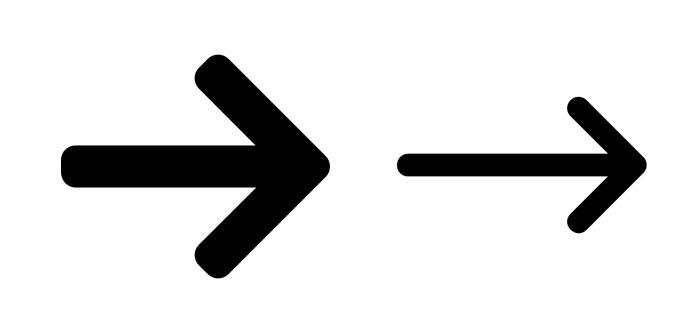- Science
- Grade 3
- Force, motion, and energy
Science.3.7.B
plan and conduct a descriptive investigation to demonstrate and explain how position and motion can be changed by pushing and pulling objects such as swings, balls, and wagons.

Knowledge and Skills Statement
The further explanation is designed to be a resource for educators that helps them better understand the topic their students are learning. Further explanations may be written at a more complex level than would be expected for students at the grade level.
The concept of different amounts of forces causing changes in motion is being reinforced through experiences with different strengths of forces. As students describe forces acting on objects, they may indicate the strength and direction of the forces as arrows of varying lengths or thicknesses. The arrows below represent the common conventions used to describe and compare strength of forces in diagrams
Thick (large) arrows represent a stronger force. Thin (small) arrows represent a weaker force.
The concept of balanced and unbalanced forces will be added to this concept at grade 5 through "equal and unequal forces," and will be reinforced in grade 7.
Research
Wilcox, Jesse, Naryah, Moore, Sarah Nolting, Courtney Reyna, and Caitlyn. 2021. “Don’t Force It! Using Guiding Questions to Scaffold Kindergartner’s Thinking of Pushes And Pulls.” Science and Children 59, no. 2 (2021): 33-37.
www.nsta.org/science-and-children/science-and-children-novemberdecember-2021/dont-force-it.
Summary: This article explains the importance of questioning strategies and gives examples of how to do so when teaching the concept of push and pull. It states that teachers should avoid using "yes" or "no" questions instead of focusing on using age-appropriate open-ended questions. Physical examples are important when presenting a push-and-pull activity, specifically everyday examples, like children playing with sleds. Probing questions can help students predict what will happen and what will make an object move faster or slower. Teachers should have students predict what will happen if different variables are changed. Asking effective questions can help students generate ideas about force and motion.

